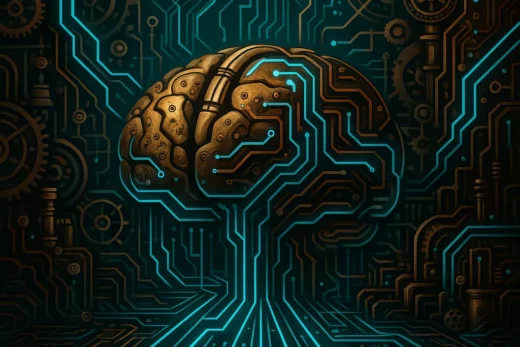In the accelerating world of Artificial Intelligence (AI) and Machine Learning (ML), performance bottlenecks are no longer just about raw GPU horsepower—they’re about data movement. As model sizes balloon and training datasets stretch into petabytes, the ability to move data fast, efficiently, and with minimal overhead becomes mission-critical.
Enter Remote Direct Memory Access ( RDMA )—a transformative networking technology that bypasses traditional OS and CPU bottlenecks to create a frictionless memory-to-memory pipeline between machines.
What is RDMA and Why Does It Matter for AI?
RDMA enables one computer to directly read or write to the memory of another, without involving the CPU or operating system on either end. This results in:
- Ultra-low latency
- Near-zero CPU utilization
- Zero-copy data transfers
- Massively parallel memory transactions
In AI workloads—especially in distributed training or inference clusters—these properties are not just optimizations. They are enablers of architectural designs that would otherwise collapse under their own weight.
RDMA’s Role in AI/ML Clusters
In AI/ML clusters, RDMA delivers two primary benefits:
- Improved Data Transfer Efficiency:
Large models (like GPT, LLaMA, and diffusion transformers) demand terabytes of gradient data to be synchronized across nodes per training step. RDMA moves this data directly to GPU memory, without CPU mediation. - Reduced CPU Overhead:
By bypassing the kernel and TCP/IP stack, RDMA frees up compute cycles, allowing CPUs to focus on coordination, orchestration, and data preprocessing—rather than shuffling bytes.
These gains are especially relevant in environments like real-time inference, reinforcement learning, or multi-agent training, where every microsecond counts.
RDMA over Converged Ethernet (RoCE): Bringing Speed to the Mainstream
Historically confined to InfiniBand fabrics, RDMA has now been adapted to run over Ethernet via RoCE (RDMA over Converged Ethernet).
RoCE v2 encapsulates RDMA verbs inside standard UDP/IP packets, allowing it to run across conventional Ethernet switches—without requiring a full InfiniBand fabric.
Why RoCE matters for AI:
- Leverages existing Ethernet infrastructure
- Compatible with NVIDIA’s GPUDirect
- Supports large-scale distributed data pipelines
- Reduces job completion time in training workloads
As more enterprises move toward Ethernet-based AI clusters, RoCE provides a cost-effective pathway to InfiniBand-level performance without proprietary lock-in.
Market Momentum: The $22 Billion RDMA Wave
RDMA is no longer niche—it’s a market on fire. Analysts project the RDMA networking sector to exceed $22 billion by 2028, with much of that growth driven by:
- The proliferation of AI-native data centers
- Demand for high-throughput, low-latency training fabrics
- The rise of GPUDirect RDMA, NVMe-over-Fabrics, and disaggregated memory systems
Vendors like NVIDIA, Intel, Broadcom, and Mellanox are embedding RDMA functionality directly into NICs, GPUs, and network switches—paving the way for plug-and-play AI acceleration across the stack.
Use Cases Where RDMA Shines
| Use Case | RDMA Benefit |
|---|---|
| Distributed Model Training | Rapid gradient sync without CPU bottlenecks |
| Real-Time Inference | Ultra-fast memory fetch across nodes |
| Reinforcement Learning | Low-latency state sharing in agents |
| Federated Learning | Secure, high-speed updates between clients |
| AI-Powered Storage Systems | Direct GPU-to-storage access with zero-copy |
Final Thoughts: RDMA Is the Nervous System of Modern AI
RDMA is more than a networking optimization—it’s a foundational layer for AI at scale. Whether deployed via InfiniBand in elite HPC environments or RoCE in cloud-native AI clusters, RDMA ensures that memory operations remain fast, predictable, and lightweight.
TL;DR:
- Bypasses OS and CPU
- Lowers latency drastically
- Frees up compute for core ML logic
- Supports both Ethernet (RoCE) and InfiniBand
- Ideal for training, inference, and distributed learning
As AI models grow, RDMA will become as fundamental as the GPUs they serve. If you’re building the infrastructure to support tomorrow’s intelligence—you should already be thinking about RDMA today.




